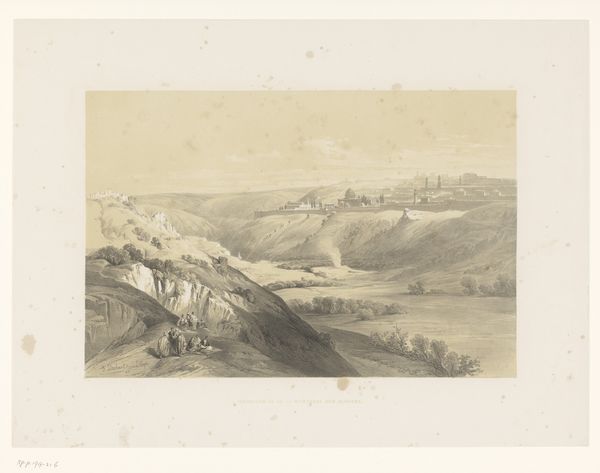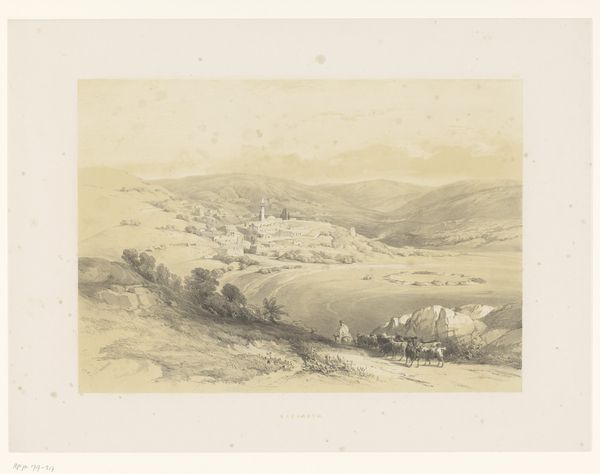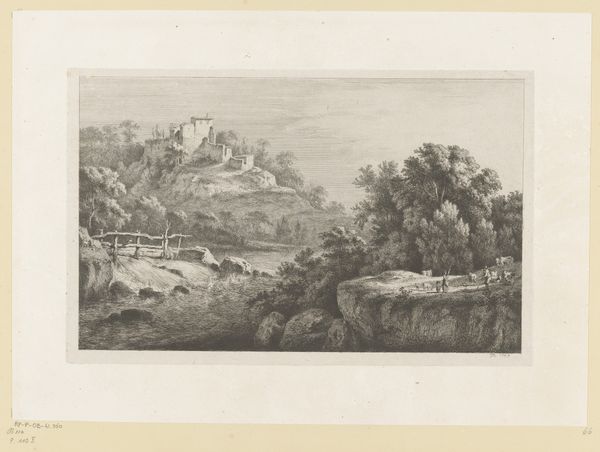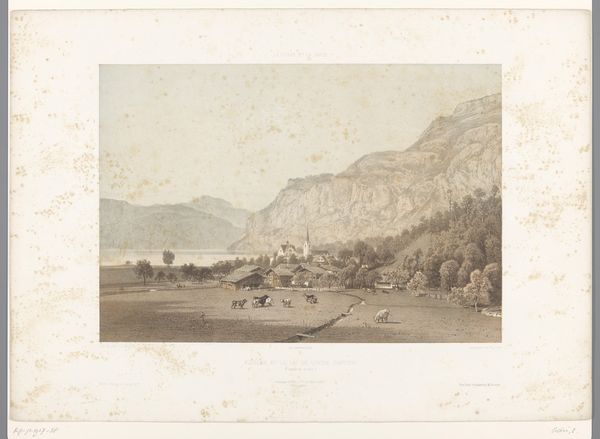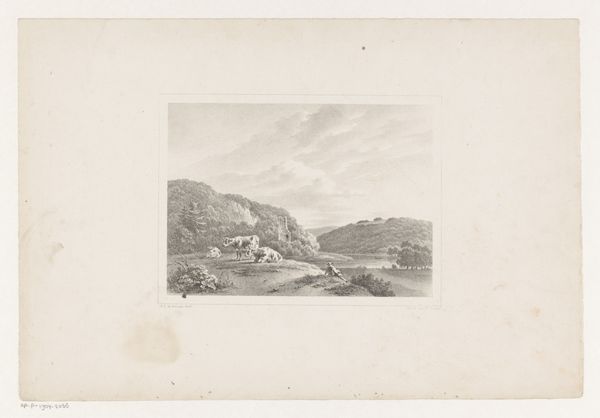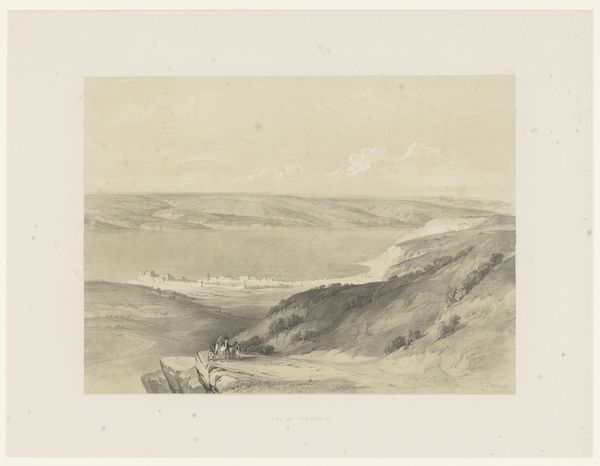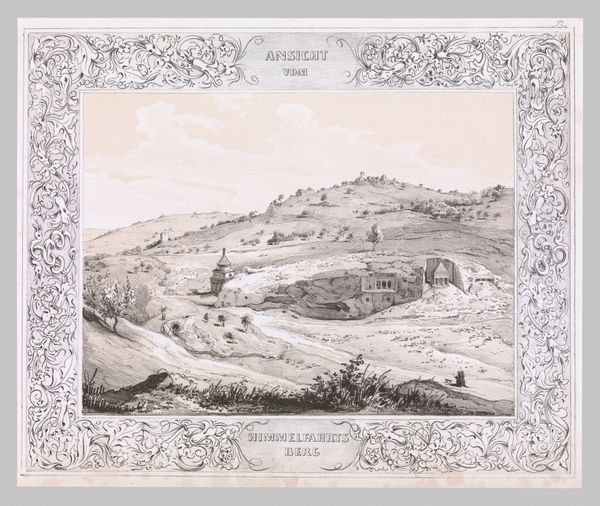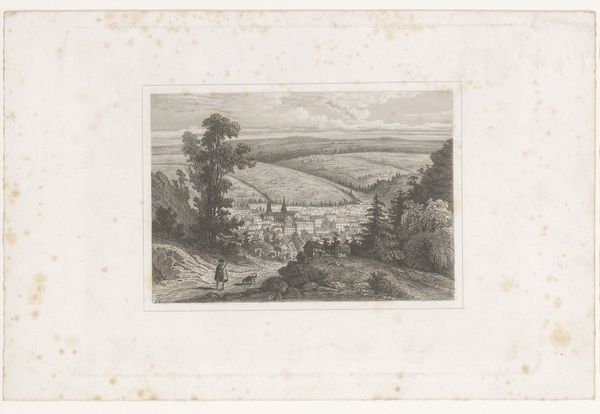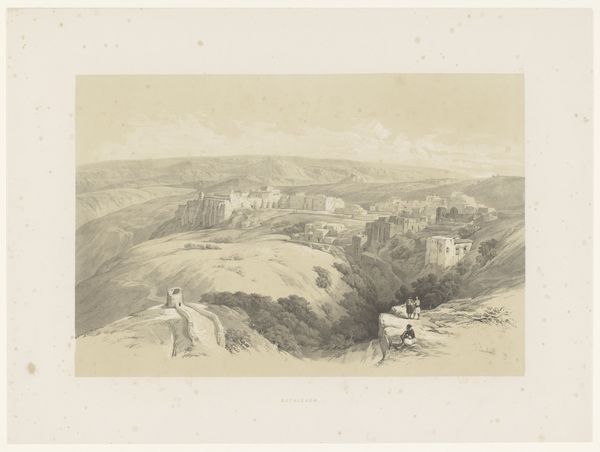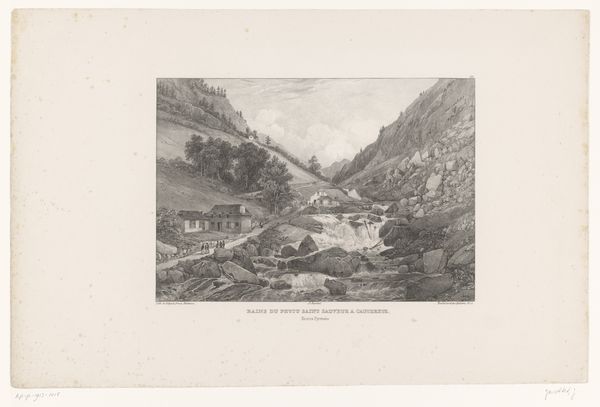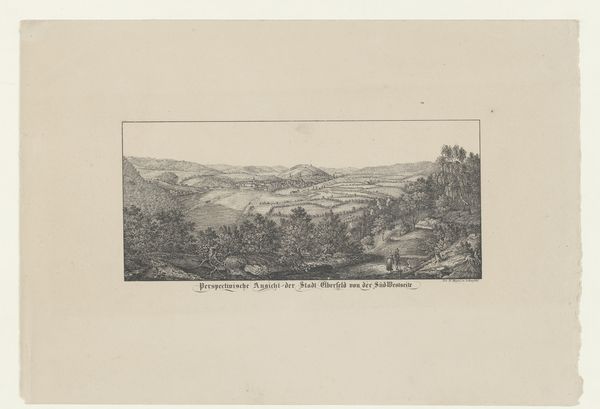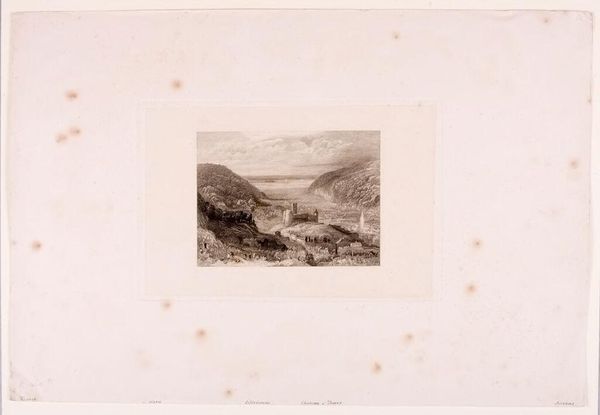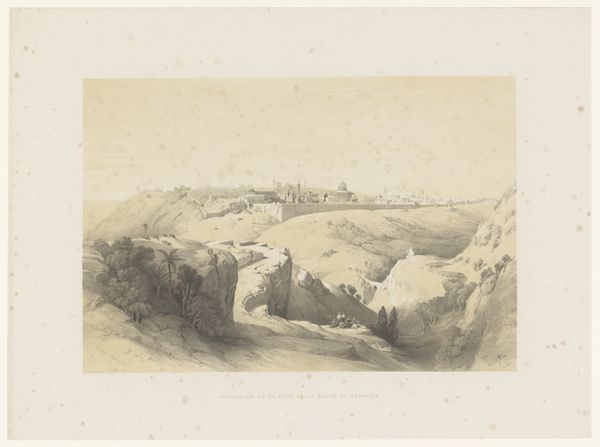
Dimensions: height 236 mm, width 319 mm
Copyright: Rijks Museum: Open Domain
Auguste Numans made this drawing of a traveler on a mountain path using pencil and paper. The lone figure traversing the landscape evokes the Romantic era's emphasis on the individual's experience of nature. Made in the Netherlands, it reflects the 19th-century European interest in landscape as a source of national identity and picturesque scenery. The image's composition, with its winding road and distant vista, invites the viewer to imagine themselves in this space. Consider the social context: During this time, travel became more accessible, yet also remained a privilege, shaping how artists depicted landscapes and who had the leisure to appreciate them. The artwork's seemingly objective representation of nature also prompts us to question whose perspective is privileged and how landscape imagery is used to construct ideas about nationhood. To understand it better, you might delve into travel literature and landscape painting traditions of the time. By examining these resources, we can better understand the social and institutional forces that shaped Numans' artistic vision.
Comments
No comments
Be the first to comment and join the conversation on the ultimate creative platform.
